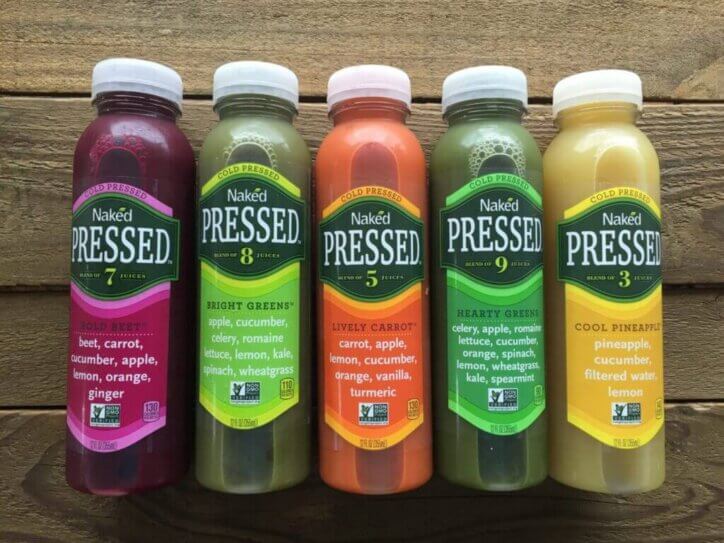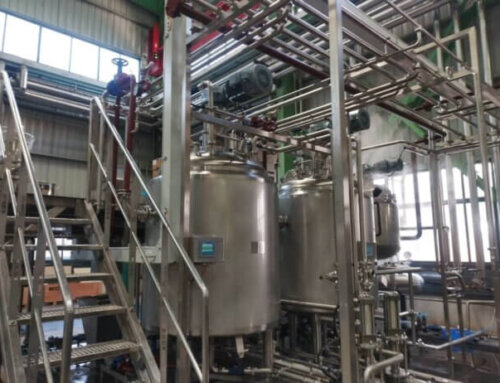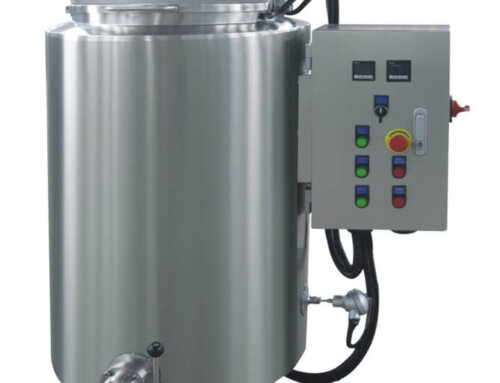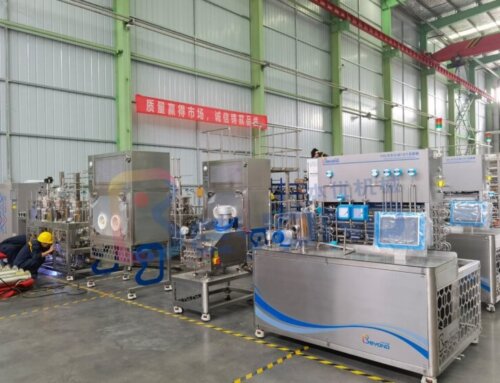After the rapid development of fruit and vegetable juice processing in the past 50 years, the processing technology has become increasingly mature. At present, the mainstream fruit and vegetable juice processing technology on the market is still thermal processing technology. The heat-treated fruit juice processing technology has the characteristics of large processing capacity, high fruit and vegetable juice yield, long juice shelf life, low equipment investment cost, and mature technology.
However, in recent decades, as young people pay more and more attention to health, nutrition and natural food, the cold press processing technology of fruit juice has become more and more popular in fruit and vegetable juice processing plants. The cold press juice processing technology is of high quality and retains the natural flavor and taste, but it also has the characteristics of high equipment investment cost, immature technology, low juice yield rate, and high management cost of the juice factory. At present, more and more fruit and vegetable juice manufacturers in European and American countries have begun to choose cold press processing technology to produce juice.

Hot Pressed Juice Processing Steps/Flowchart
The hot press juice will be thermally treated in the juice extracting, sterilizing and filling process. Fresh fruits and vegetables will be cleaned by the mechanical washer, then according to nature, some fruits and vegetables will be blanched by hot water, then after peeling, destoning, deseeding and crushing pretreatment process, the fruit and vegetable mash will be obtained. To obtain high juice yield rate, the mashed will be heated again to inactivate the enzyme of the juice, then the mash will be sent to pulping machine or industrial juicer machine to obtain the juice. During the working process of the juicer, the juice will be heated again due to the squeezing force or centrifugal force. After juice extracting, we will use the pasteurizer or sterilizer to heat the juice to obtain a long shelf life. After sterilizing, if do the hot filling, the juice in containers will be heated again after filling for secondary pasteurizing. So in hot processing juice, the fruit and vegetable juice will be heated 3-5 times, Especially for heat-sensitive fruit and vegetable juices, the quality of the juice will be severely reduced.
Cold Pressed Juice Production Process/Processing Steps
The cold press juice can also be called NFC juice, it is a method of extracting juice from fresh fruits and vegetables without exposing them to high levels of heat. This gentle process helps to preserve the natural flavors, colors, and nutrients of the produce. The cold press juice will not be heated in the whole processing system. Fresh fruits and vegetables will be washed by the washing machine, and then through peeling, deseeding and destoning process, we will obtain the fruit mash, when for juice extracting, we use vacuum extracting tanks or hydraulic press juice extractors to obtain the juice, during the juice extracting, the juice will not be heated. Then the juice will be filtered then filled into containers. After filling, the juice container will be fed into an HPP sterilizer, during sterilizing, ultra-high pressure will be applied to the juice container to destroy the bacteria cells to complete the sterilization process, with no need for heat treatment. The cold-pressed juice processing plant is suitable for producing small-scale, heat-sensitive, high-valuable fruit vegetable juice.
In all, cold press juice production process involves fresh fruits and vegetables preparing, fruit juice cold extracting, juice extraction, juice bottling, HPP juice pasteurizing, and cold press juice packing and cold storage.
Fruits and vegetables selection: High-quality fruits and vegetables are selected for juicing. These should be fresh, ripe, and free from any spoilage.
Fruit Washing and Cleaning: Before juicing, the fruits and vegetables are thoroughly washed and cleaned to remove any dirt, debris, or pesticides. This step is crucial to ensure the safety and cleanliness of the final juice.
Fruit Preparation: Fruits and vegetables are prepared by cutting them into smaller pieces or chunks, or removing peels and fruit stones or seeds. This makes it easier for the juicer to extract the juice.
Cold Press Juicing: In the cold press juicing method, also known as masticating juicing, a hydraulic press is used to extract juice from fresh fruits. Unlike traditional centrifugal juicers/screw juicers that use high-speed spinning blades, cold press juicers operate at a slower speed and generate less heat, which helps preserve the nutrients and enzymes in the juice.
Juice Filtration: Once the juice is extracted, it may go through a filtration process to remove any remaining pulp or solids, resulting in a smoother juice consistency. the plate and frame filter can be used for juice filtering.
Cold Press Juice Bottling: The freshly pressed juice is then bottled or packaged immediately to minimize exposure to air and light, which can degrade its quality and nutritional value. It’s important to use bottles or packaging that are airtight and opaque to maintain freshness.
Cold Press Juice HPP treatment(Optional): To extend the shelf life of the cold press juice, after the juice is bottled, the containers will be sent to high-pressure pasteurizers to kill the pathogenic bacteria. Unlike the traditional heat treatment sterilization, the HPP system uses high pressure instead of heat to pasteurize the juice, so the juice color, flavor and nutrients can be original to the maximum extent.
Refrigeration: Cold press juices are highly perishable due to their raw and unpasteurized nature. Therefore, they need to be refrigerated promptly to slow down microbial growth and maintain their freshness.
Quality Control and Testing: Throughout the production process, quality control measures should be implemented to ensure the safety, consistency, and quality of the cold press juice. This may include regular testing for contaminants, pH levels, and other parameters.
Distribution: Once packaged and quality-checked, the cold press juices are distributed to retailers, juice bars, or directly to consumers through various channels such as grocery stores, health food stores, or online platforms.
Consumption: Cold press juices are best consumed fresh within a few days to fully enjoy their nutritional benefits. They can be enjoyed on their own as a refreshing beverage or incorporated into smoothies, cocktails, or other recipes.
Hot Pressed Juice and Cold Pressed Juice Processing Comparison
| Item | Hot Press Juice Technology | Cold Press Juice Technology |
|---|---|---|
| Juice Pretreatment Process | Hot water soaking, blanching, fruit and vegetable mash preheating to inactivate the enzyme all the process is thermal processing, the processing temperature is 60-95℃ | Fruit washing, crushing all in ambient temperature, no heat treatment |
| Pulping and Juicer Process | Use screw press, roller juicer, colloid mill to extract the juice, During the operation of the equipment, heat will inevitably be generated to heat the juice | Use vacuum extracting tank, enzyme extracting or hydraulic press to obtain the juice, gentle and no heat generating |
| Juice Sterilizing | Use high temperature treatment to kill bacteria in juice, the most common sterilizer is plate pasteurizer, tubular sterilizer, DSI sterilizer, retort sterilizer, spray and water bath pasteurizer. The sterilizing temperature is from 70-150℃ | Use high pressure(100-600MPA) to destroy the bacterial cells in the juice, or use the electromagnetic pulse to kill the bacteria. The common sterilizer is HPP sterilizer and PEF sterilizer |
| Juice Filling | 85-90℃ hot filling, 30℃ aseptic filling or 4℃ cold filling | 30℃ ambient temperature filling |
| Juice Quality | Juice nutrient, flavor and color will be destroyed | All natural ingredients in the juice are preserved |
| Juice shelf life | 7 days-24 months according to sterilizing, filling technology and packing container | 7 days- 90 days in refrigerator |
| Equipment Investment | Lower | Higher |
| Suitable Products | Juice with low heat sensitivity | High heat sensitivity, high valued juice products |
| Processing Advantage | High processing capacity, high juice yield rate, low investment, products long shelf life | High quality juice with original flavor, more healthy |




